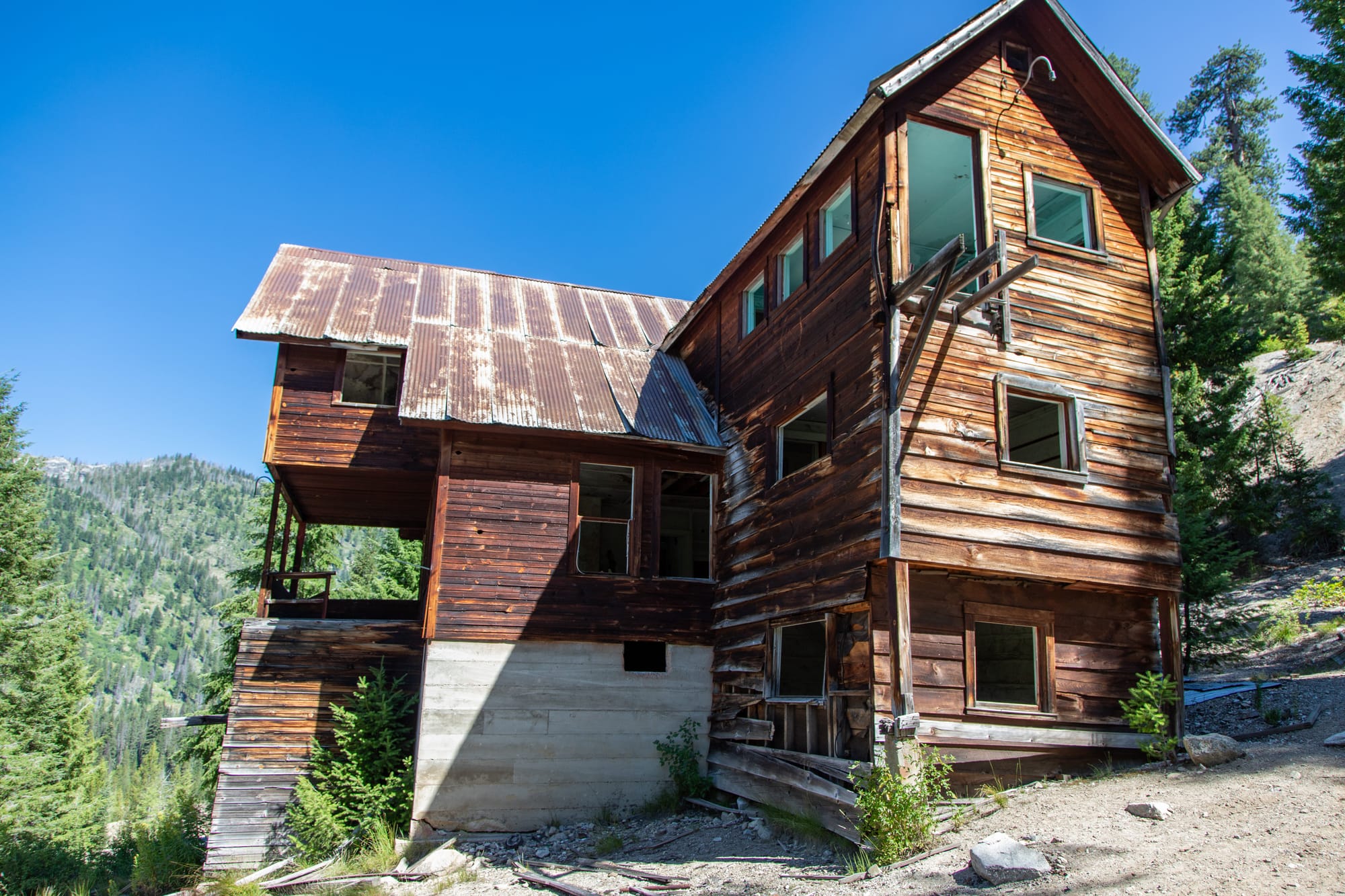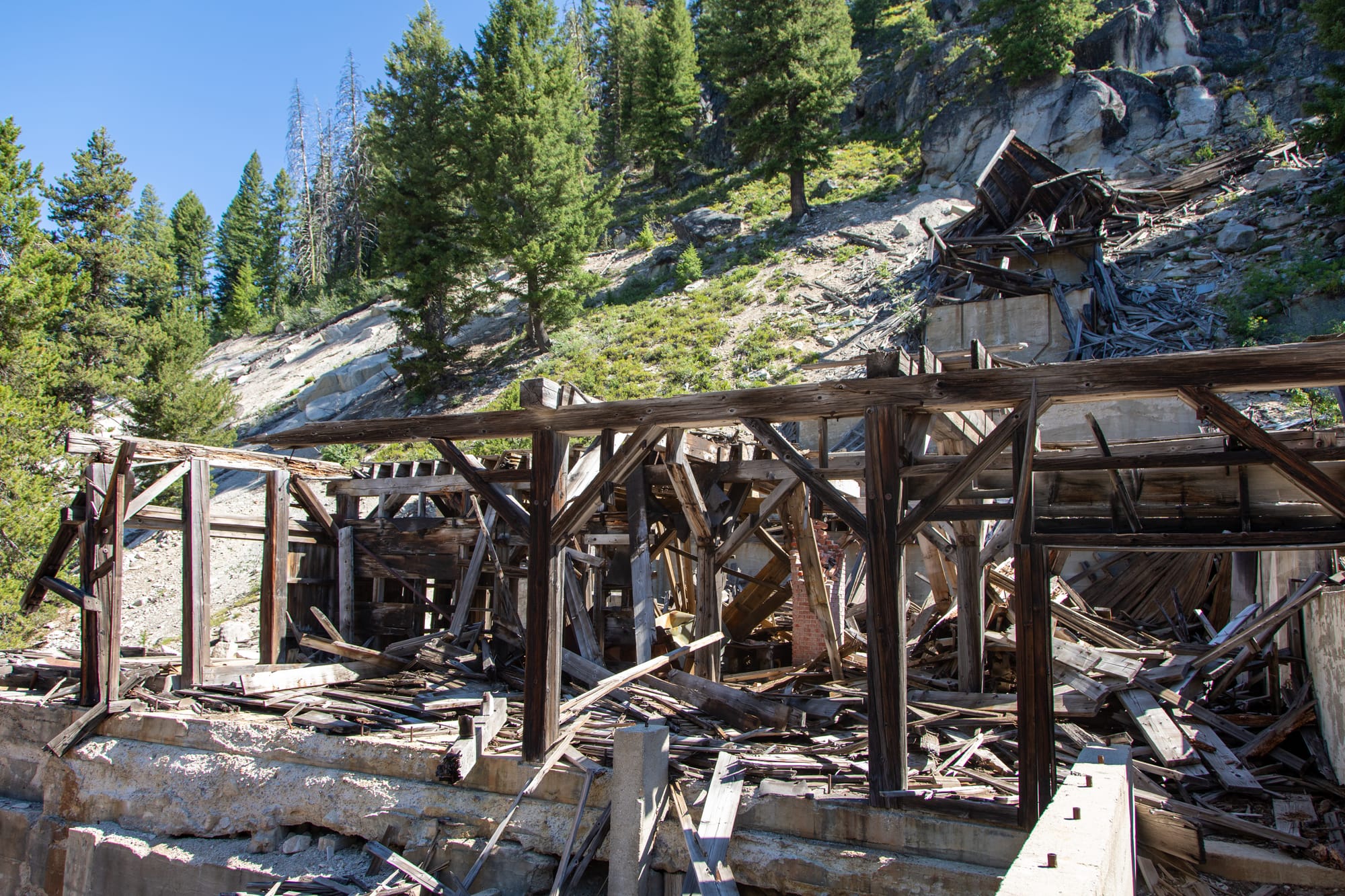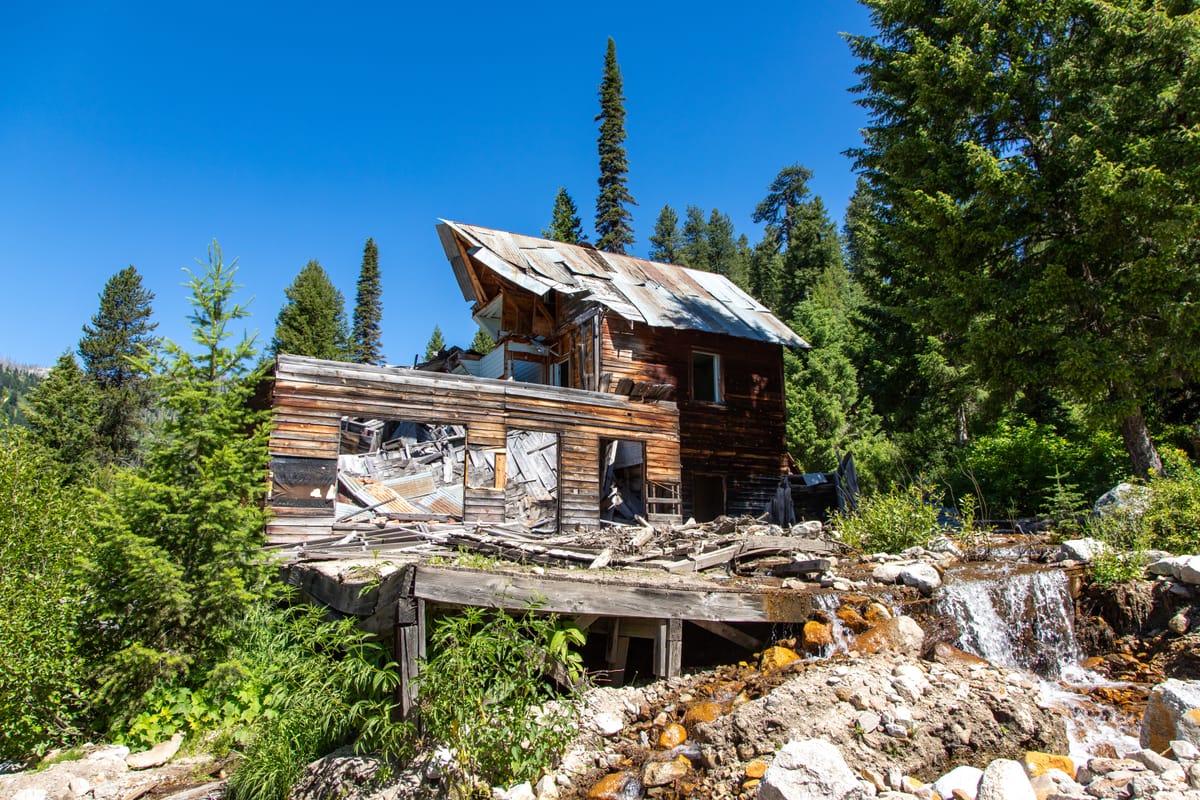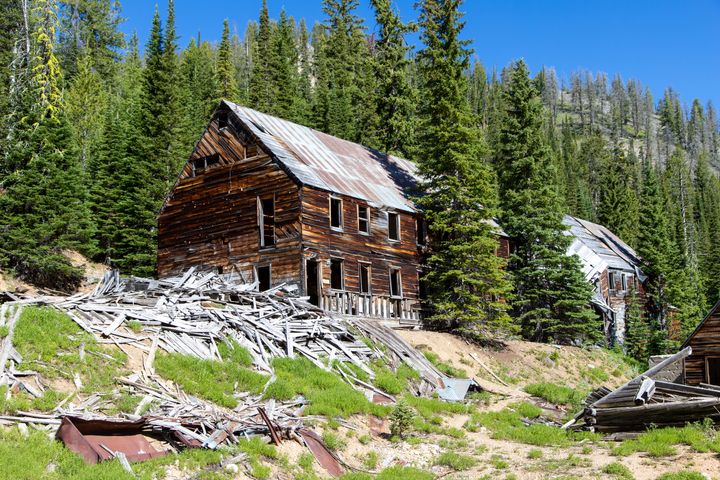The Deadwood Mine, located in the Deadwood mining district of Valley County, Idaho, was a significant lead-zinc producer in the early 20th century. We made a brief stop here in 2020 on our way to some other mine camps in the area.
The mine's history can be traced back to the 1880s when James H. Hawley discovered a narrow outcrop of high-grade silver-bearing quartz on the Lost Pilgrim ground. However, it wasn't until the early 1900s that the Hall brothers found galena float on strike with the Lost Pilgrim vein, leading to the discovery of an extensive lead-silver deposit in 1907.
Several mining companies, including the Lost Pilgrim Mining Company, Hall Interstate Mining Company, and Deadwood Mining Company, Limited, were formed to develop the property. In 1923, the Bunker Hill & Sullivan Mining & Concentrating Company, under the guidance of consulting mining engineer Oscar Hershey, began negotiations to lease the Hall Interstate and Lost Pilgrim properties.
Bunker Hill commenced operations in 1924, constructing a camp. The company focused on exploring and developing the Hall and Lost Pilgrim veins through extensive tunneling and raising. In 1927, convinced of the mine's potential, Bunker Hill built a 100-ton-per-day flotation mill and a 250-horsepower hydroelectric power plant.
The mine operated from 1928 to 1931, producing lead and zinc concentrates that were shipped to Bunker Hill's smelter and electrolytic zinc plant near Kellogg, Idaho. However, due to the Great Depression and difficulties in locating consistent ore bodies, Bunker Hill closed the mine in May 1931 and forfeited its claim options the following year.



In 1940, Callahan Zinc-Lead obtained a long-term lease on the property, rehabilitating the mine and mill. The company operated the mine throughout World War II, benefiting from government incentives and increased demand for strategic metals. Despite Callahan's efforts, the mine failed to yield the expected ore grades and quantities. Faced with limited ore reserves and labor shortages, Callahan ceased operations in 1946 and surrendered its lease in 1947.
From 1929 to 1950, the Deadwood Mine produced 125,793 tons of ore, yielding 2,658 ounces of gold, 634,277 ounces of silver, 444,343 pounds of copper, 4,978,449 pounds of lead, and 10,176,833 pounds of zinc. Almost all of this production was when the mine was operated either by Bunker Hill or by Callahan Zinc-Lead.



